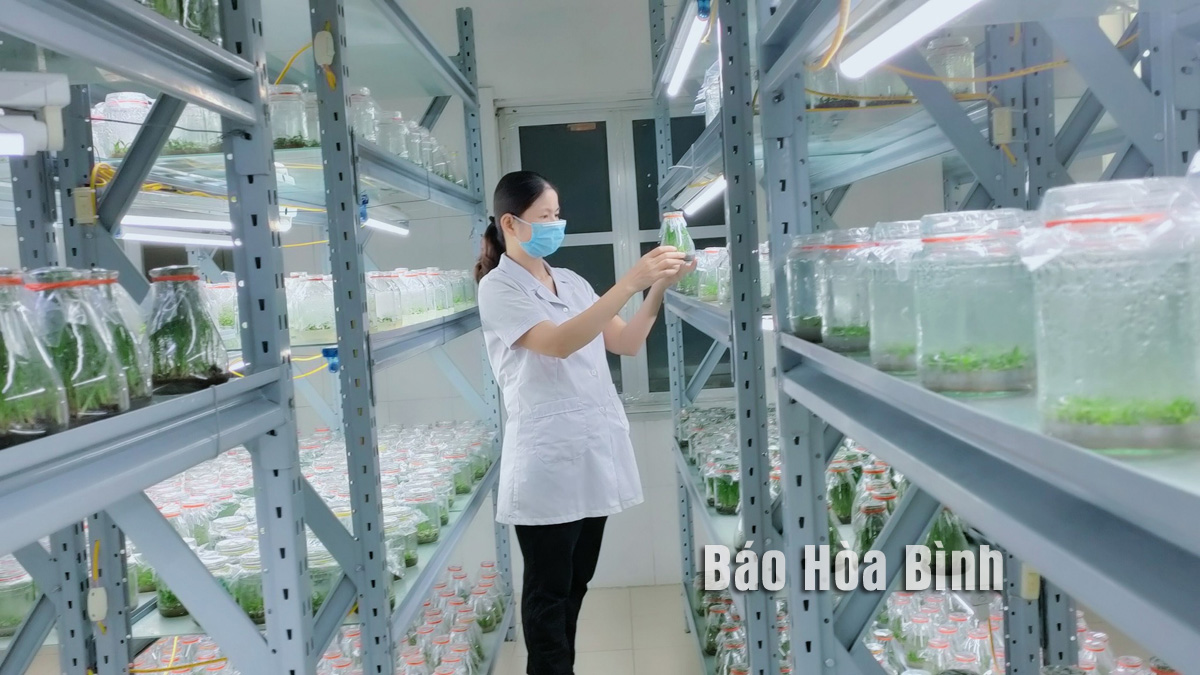Vietnam is home to a rich ecosystem with over 4,000 plant species used in medicine, forming the foundation for the cultural diversity and traditional medical knowledge of various ethnic groups.
Biopharm Hoa Binh
applies plant tissue culture technology in its production process.
In the context of integration and development, the conservation and development
of precious medicinal plants have become essential, particularly in light of
current challenges related to the planning, conservation, and standardisation
of medicinal resources.
The model
"Conservation and Development of Genetic Resources of Some Indigenous
Medicinal Plants on Limestone Mountains for Treating Bone and joint Diseases of
the Muong and Dao Ethnic Groups," implemented by the Linh Duoc Son
Agricultural Cooperative, is expected to help address these challenges while
promoting green economic potential for ethnic minority communities in Hoa Binh.
According to Director
of Biopharma Hoa Binh Dang Thi Phuong Hao, Hoa Binh province has a rich natural
ecosystem, especially in limestone mountain areas, which account for over 70%
of its natural forest area. With the goal of conserving local medicinal
resources and helping reduce poverty in the local community, Hao has developed
a model for cultivating valuable medicinal plants of the Muong and Dao ethnic
groups.
As a result, the model
has successfully bred over 100,000 high-quality young medicinal plants to
supply various cooperatives for medicinal plant cultivation both within and
outside the province.
Additionally, the model applies in-vitro technology
(tissue culture) to rapidly multiply medicinal orchid varieties for the
pharmaceutical market. The move helps conserve rare plant species while
creating a stable raw material source for medicinal production.
The effectiveness of the model lies not only in the conservation and
development of medicinal plant varieties but also significantly contributes to
local economic development. The Linh Duoc Son cooperative currently provides
stable jobs for 16 employees, with a monthly income ranging from 7 to 8 million
VND per person (275-315 USD), and supports hundreds of households in
cultivating medicinal plants. The model also generates considerable income from
previously abandoned limestone areas, with an average revenue of 200 million
VND per hectare.
A distinctive feature of the model is its ability to provide high-quality plant
varieties, enhancing economic value of medicinal plants, creating stable
livelihoods for ethnic communities while helping to prevent and combat bone and
joint diseases within the community. With the current area of over 5 ha in the
districts of Mai Chau, Da Bac, Kim Boi, Lac Son, Tan Lac, and Yen Thuy, this
model also cultivates medicinal plants on cliffs and in natural degraded
forests, helping to protect the environment and restore forest ecosystems.
According to the Hoa Binh Oriental Medicine Association, throughout the
implementation of the model, the success of the Linh Duoc Son Agricultural
Cooperative has opened up a sustainable development direction for the medicinal
economy in limestone mountain areas of Hoa Binh.



